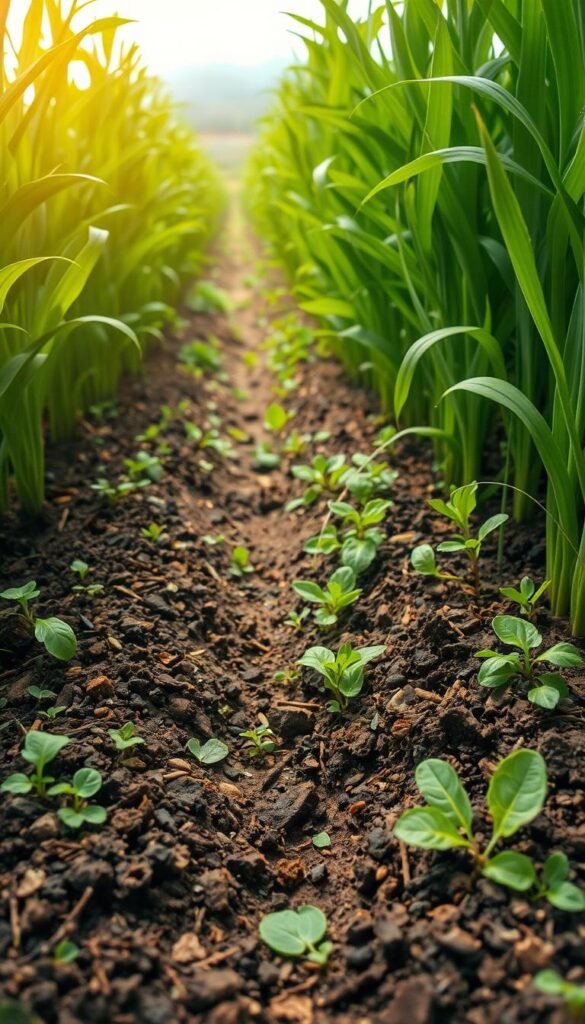Did you know nearly half of U.S. gardeners skip feeding their soil? A Gallup Gardening Survey reveals this oversight leads to weaker plants and smaller harvests. Your garden’s success starts with replenishing what last season’s growth consumed.
Plants rely on three key nutrients—nitrogen, phosphorus, and potassium—to thrive. Without them, blooms fade, fruits shrink, and pests move in. Organic or synthetic? The debate continues, but both aim to restore balance.
Testing your dirt is the first step. Local extension services recommend checking levels yearly. Founder of Gardener’s Supply puts it simply: “Feed the soil, and the plants will follow.”
Ready to transform your garden? Let’s explore how the right mix makes all the difference.
Why NPK Is Essential for Your Plants
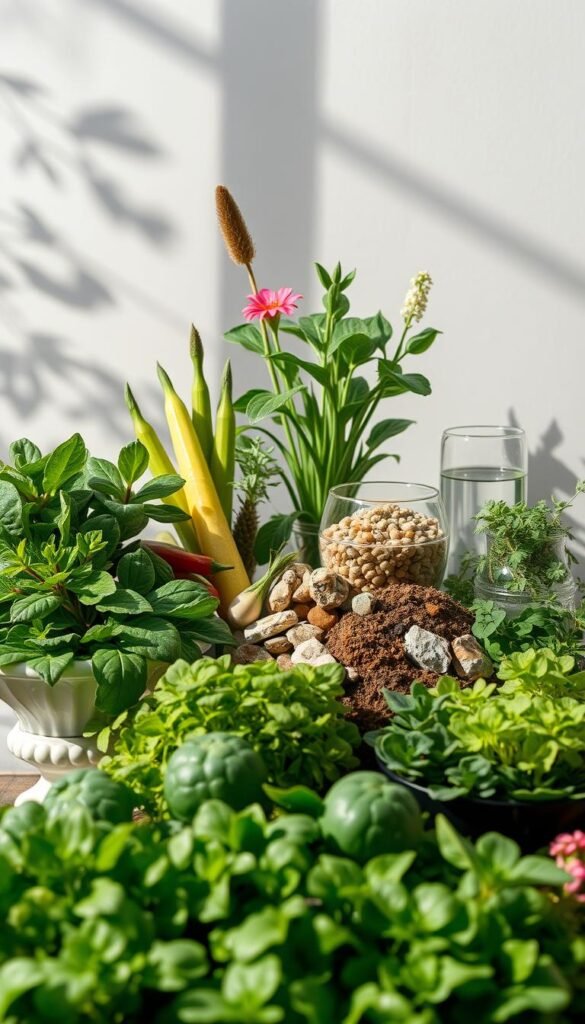
Your plants silently signal when they lack key nutrients—yellow leaves whisper nitrogen hunger. While carbon and oxygen come from air and water, nitrogen, phosphorus, and potassium must be replenished in soil. These three fuel every stage of growth, from roots to blooms.
Nitrogen builds chlorophyll and proteins. Too little? Leaves turn pale. Too much? You’ll get lush greens but few tomatoes. A 16-8-2 fertilizer helps leafy veggies like lettuce thrive.
Phosphorus strengthens roots. Transplant tomatoes with a phosphorus boost, and they’ll anchor faster. Delphiniums, with their towering blooms, demand extra for vibrant flowers.
Potassium is the unsung hero. It toughens plants against diseases like rose black spot. Remember the rhyme: “Up, down, all around”—it helps stems, roots, and overall health.
Don’t forget calcium and magnesium. They fine-tune soil structure. But even perfect nutrients fail if pH is off. Acidic soil locks out phosphorus, leaving plants starved despite your care.
Test your dirt yearly. Balance these elements, and your garden will reward you with resilience and bounty.
The Role of Each Nutrient in NPK
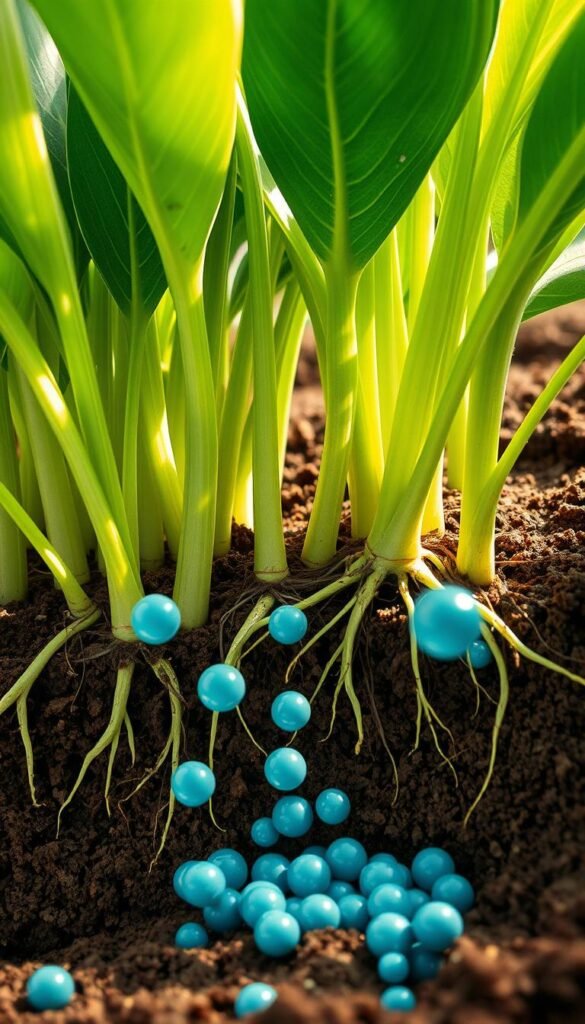
Ever wonder why some plants grow lush while others struggle? The answer lies in three powerhouse nutrients—nitrogen, phosphorus, and potassium. Each plays a unique role, like a specialized tool in your gardening kit.
Nitrogen (N): Fuel for Foliage
Nitrogen is the green-thumb secret for vibrant leaves. It builds chlorophyll, turning sunlight into energy. Lawns love it, but tomatoes? Too much nitrogen gives you bushy plants with few fruits.
Watch for pale yellow leaves—a classic cry for nitrogen. Balance is key. A 10-5-5 mix works wonders for kale, while a 5-10-10 blend keeps tomatoes fruiting.
Phosphorus (P): Root and Bloom Booster
Phosphorus is your underground ally. It strengthens roots, helping transplants like peppers settle faster. Notice purple stems? That’s a phosphorus SOS.
For blooms and big seeds, try GSC Organic Tomato Fertilizer (5-6-5). Roses and delphiniums devour phosphorus during flowering. Pro tip: Cold soil locks it up—warm the dirt first.
Potassium (K): The All-Around Protector
Potassium is the plant’s immune booster. It regulates water, fights diseases like rose black spot, and even sweetens fruits. Burnt leaf edges? Potassium is MIA.
Drought-stressed plants crave potassium. A 3-1-2 ratio works for most veggies, while fruiting plants like tomatoes need extra. For more on troubleshooting nutrient deficiencies, check our guide.
- Nitrogen deficiency: Yellow older leaves, stunted growth
- Phosphorus deficiency: Purple stems, weak blooms
- Potassium deficiency: Scorched edges, limp stems
How to Choose the Right Fertilizer for Your Garden
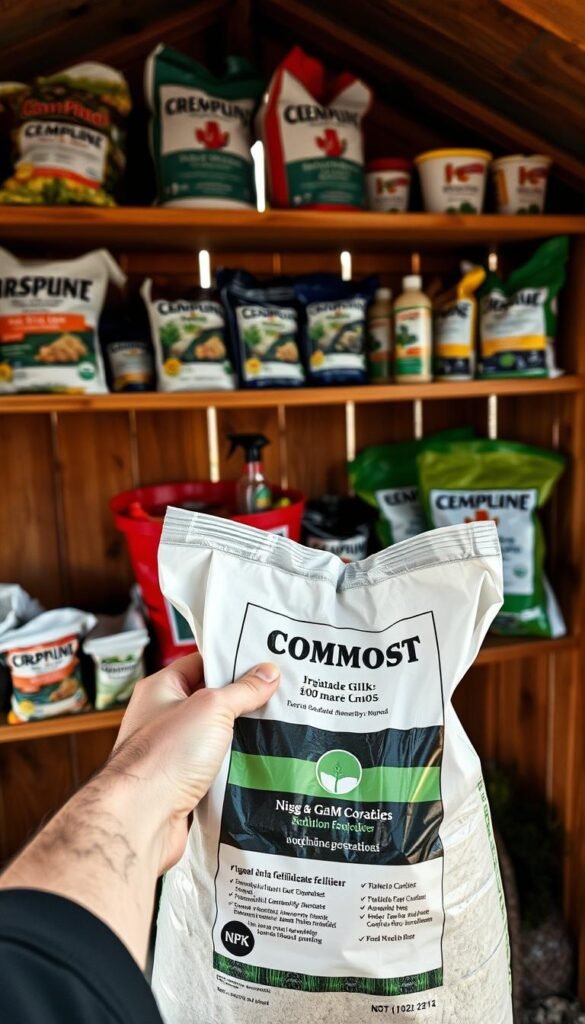
Picking the perfect plant food can feel overwhelming with so many options. Start with a soil test. It reveals what your dirt lacks—like a nutrition label for your garden.
Organic fertilizers, like Espoma Plant-tone, feed soil microbes first. Nutrients release over 4 months. Synthetic options, such as Miracle-Gro, work instantly but don’t improve soil texture.
Match the ratio to your plants:
- 5-5-5: Balanced for most veggies
- 3-1-2: Ideal for leafy greens
- 0-10-10: Boosts blooms in roses
| Type | Release Speed | Best For | Pet-Safe? |
|---|---|---|---|
| Organic (e.g., Dr. Earth) | Slow (2–4 months) | Soil health | Yes |
| Synthetic (e.g., Scotts) | Fast (24 hours) | Quick fixes | No |
Apply organic options in fall. Microbes need time to break them down. For acidic soil, like blueberries need, use Holly-tone (4-3-4).
Pro tip: Foliar sprays (liquid fertilizer on leaves) help during fruiting. A diluted fish emulsion works wonders for tomatoes.
Calculate needs: A 100-lb bag of 5-7-4 contains 5 lbs nitrogen. For 10-10-10, use 1 lb per 100 sq ft—half the amount of 20-20-20.
Decoding Fertilizer Labels: What the Numbers Mean
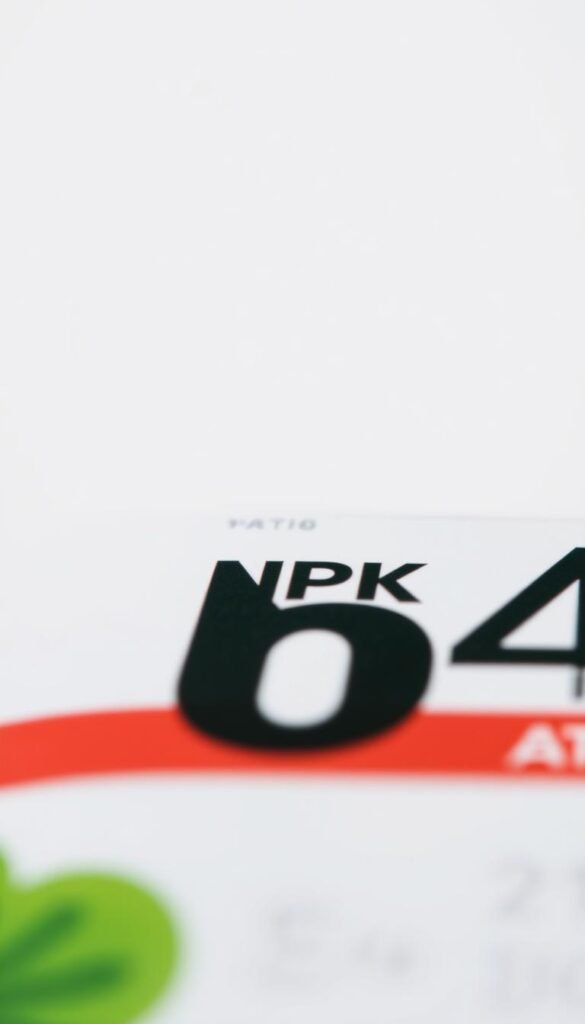
Those three numbers on fertilizer bags aren’t random—they’re your garden’s recipe for success. The label tells you exactly what’s inside, like a nutrition facts panel for plants. A 20-5-5 mix, for example, delivers four times more nitrogen than phosphorus or potassium.
- First number (N): Nitrogen for leafy growth
- Second number (P): Phosphate for roots and blooms
- Third number (K): Potash for overall health
Need to feed a 1,500 sq ft lawn with 22-2-8? Divide 100 by the nitrogen number (22) to get 4.5 lbs per 1,000 sq ft. Multiply by 1.5 for your space—that’s 6.75 lbs total.
| Type | Guaranteed Analysis | Filler Ingredients |
|---|---|---|
| Organic (e.g., Dr. Earth) | Varies by batch (no strict ratio) | Compost, sulfur, bone meal |
| Synthetic (e.g., Scotts) | Precise NPK (like 10-10-10) | Limestone, sand |
Watch out for high-phosphorus blends like 3-20-20. They boost blooms but can pollute waterways. Some states ban them outright. Always check local laws.
Tomatoes thrive on 5-6-5, while roses demand 0-10-10. Match the amount to your plants’ *actual* needs—your garden will thank you.
Practical Tips for Applying NPK Fertilizers
Your garden’s potential unlocks when you apply nutrients correctly—here’s how. Start with a soil test. Local extension offices offer kits for $1–$15, or use DIY options like Luster Leaf. Results reveal pH and nutrient gaps.
Calculate needs precisely. For lawns, divide 100 by the nitrogen percentage (e.g., 22 in 22-2-8 = 4.5 pounds/1,000 sq ft). Adjust for garden size—a 10×10 bed needs 0.45 lbs.
Liquid vs. Granular: Choose based on speed and soil type.
| Type | Best For | Application | Safety |
|---|---|---|---|
| Liquid (e.g., Neptune’s Harvest) | Quick fixes, container plants | Mix with water; apply weekly | Gloves required |
| Granular (e.g., Milorganite) | Long-term ground feeding | Spread evenly; water after | Pet-friendly |
Apply granules by trenching (dig 2″ beside plants) or top-dressing. Water lightly to activate. Avoid rain forecasts—nutrients wash away.
For pots, use slow-release spikes like Jobe’s. They feed for 8 weeks. Always wear gloves, and store products away from pets.
Pro tip: Richmond VT gardeners fertilize perennials in early spring and veggies at planting. Match timing to your zone for best results.
Nourish Your Plants with Confidence
Healthy soil means happy plants—nourish yours with confidence. Balance pH naturally with compost or targeted fixes like lime for alkaline soil. Over time, organic matter releases seven key micronutrients, boosting root and fruit development.
Keep a garden journal. Snap before-and-after photos to track progress. Proper feeding cuts pest attacks and saves water—your plants’ health reflects your care.
Follow this quarterly checklist for best results:
- Spring: Mix compost into beds
- Summer: Side-dress heavy feeders
- Fall: Test soil and amend
- Winter: Plan next year’s rotations
As the founder of Green Thumb Nursery says, “There’s no place I’d rather be than digging in the dirt.” Ready to simplify feeding? Grab your free fertilizer calculator below and grow with ease.

